|
N o r d - E x p r e s s
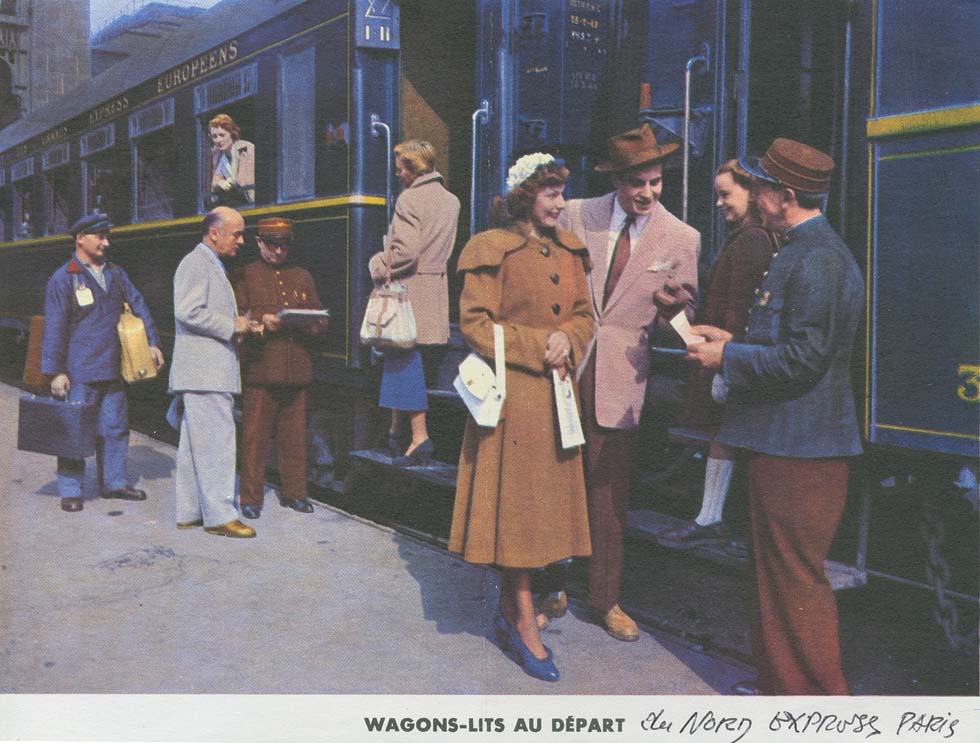
Nord-Express, a Wagons-Lits advertisement, reminding the past (coll. Roger Commault)
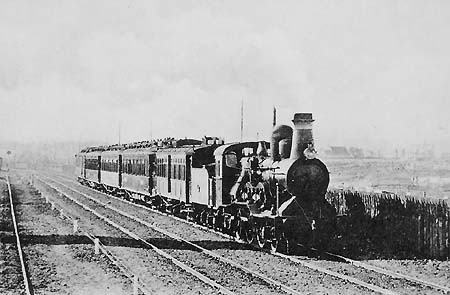
Nord-Express (not the Oostende-Wien-Express!), Belgian class 12 and ex-Fourgon-Fumoir from the Club Train, after departure at Oostende, 19th century (coll. SNCB)
|
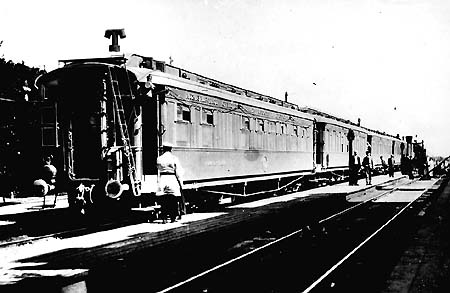
Nord-Express on broad gauge Wirballen - St. Petersburg, 1903 (G.G. Bain, coll. Opladen and Dr. Stoeckl)
|
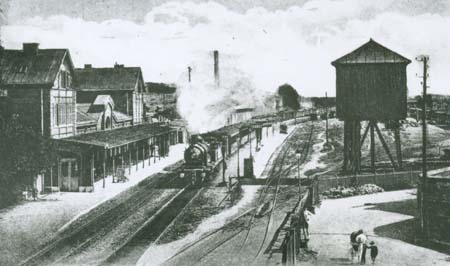
Express with 4 Nord coaches, 2 CIWL cars and a van, described by an old card as the Nord-Express passing Noyon, France before WWI (coll. Dr. Mihaly Kubinszky)
|

Nord-Express (St.Petersburg-) Paris with Prussian S3 near Insterburg, 1903 (Deutsches Museum Munich)
|
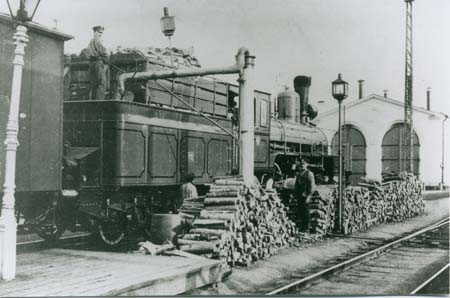
St. Petersburg-Warsaw railway, the later class AD of 1885 (coll. Roger Commault)
|
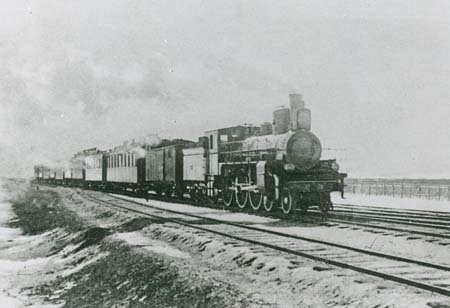
Express with the later class Av, by an old Knight postcard described as St. Petersburg - Moscow express, but Rakov stated the engines' use only on other lins, e.g. Moscow - Brest (DB Verkehrsarchiv)
|
Otto von Bismarck, then a Prussian deputy, asked for a strategic railway to the East, to Koenigsberg, already in 1847. From 1862 it formed the link with St. Petersburg. The Tsar however had decided for the 5ft or 1524 mm gauge and therefore passengers had to change trains at Eydtkuhnen. In Belgium, Georges Nagelmackers founded the Compagnie Internationale des Wagons-Lits (CIWL) in 1876. From 1874 already his sleeping-cars ran Berlin - Eydtkuhnen and from 1883 Paris - Berlin. He had an early dream of a grand express crossing his native town Liege and in 1884 he proposed his project of a Nord-Sud-Express running from St. Petersburg to Paris and Lisbon over 4500km, with a branch Liege - Calais and change of wheel-sets on the borders. However, Prussia had its own "Bromberger Schlafwagen", Wagons-Lits was locked out and from 1886 Prussian sleepers ran to Eydtkuhnen. With Russia, Nagelmackers had talks already in 1878 and from 1887 his sleepers connected Warsaw with Moscow. Tsarist pressure finally forced Prussia to agree on the grand express to St. Petersburg. The Nord-Express, a CIWL de-Luxe, connected Paris and Oostende with St. Petersburg from May 9, 1896, first once weekly, with change of trains eastbound at Wirballen (Virbalis) and westbound at Eydtkuhnen. Until 1902 there was a "Calais - St. Petersbourg-Express" consisting exclusively of a saloon from the old Club-Train and running only Calais - Brussels. And also the Oostende branch included a car from the Club-Train, a "fourgon-fumoir". In 1897 the Nord-Express for a short time conveyed a sleeper Nice - Paris - Wirballen, but in 1898 the "St. Petersbourg - Wien - Nizza - Cannes - Express" started, the (badly occupied) "Train des grands ducs." In Russia it was hauled by the Pb class tandem-compounds, whereas traction of the Nord Express changed to Ku and the new S class. From 1899 the Nord-Express alternatively ran to Warsaw and in 1909 a CIWL de-Luxe with the official name "Warschau-Moskau-(Nord-)Express" was inaugurated. A Japanese advertisement told the passengers that they had to change trains at Warsaw at the same platform and at Moscow the Nord-Express terminated at Kurski station, where the Trans-Siberien started.
Nord-Express
CIWL de-Luxe, 1909,
Paris section arriving at Liege (standard gauge).
| 1 F | (van) | CIWL | Paris - Berlin/Wirballen/Warsaw |
| 2 WL | (sleeper) | CIWL | Paris - Berlin/Wirballen/Warsaw |
| 1 WR | (restaurant) | CIWL | Jeumont - Liege (?) |
| 1 ABBu | (1st 2nd class) | Nord | Paris - Liege (-Cologne) |
| 1 F | (van) | Nord | Paris - Liege (-Cologne) |
Oostende section arriving at Liege (standard gauge)
| 1 F | CIWL | Oostende - Brussels |
| 2 WL | CIWL | Oostende - Berlin/Wirballen/Warsaw |
| 1 WR | CIWL | Oostende - Berlin/Wirballen/Warsaw |
| 1 F | CIWL | Oostende - Berlin/Wirballen/Warsaw |
At Liege the trains were combined, on alternate days to Wirballen or Warsaw
Departure Wirballen (broad gauge):
| 1 F | CIWL | Wirballen - St. Petersburg |
| 1 WR | CIWL | Wirballen - St. Petersburg |
| 3 WL | CIWL | Wirballen - St. Petersburg |
Departure Warsaw (broad gauge):
| 1 F | CIWL | Warsaw - Moscow |
| 1 WR | CIWL | Warsaw - Moscow |
| 3 WL | CIWL | Warsaw - Moscow |
Colors: CIWL teak
St. Petersbourg - Wien - Nizza - Cannes-Express
CIWL de-Luxe, 1908/09 (according to Dr. Muehl):
Departure St. Petersburg (broad gauge):
| 1 F | CIWL | St. Petersburg - Warsaw |
| 1 WR | CIWL | St. Petersburg - Warsaw |
| 2-3 WL | CIWL | St. Petersburg - Warsaw |
| 1 F | CIWL | St. Petersburg - Warsaw |
Departure Warsaw (standard gauge):
| 1 F-cuisine | CIWL | Warsaw - Vienna |
| 1 WR | CIWL | Warsaw - Granica |
| 2 WL | CIWL | Warsaw - Cannes |
| 1 F | CIWL | Warsaw - Cannes |
Colors: teak
Seasonal train only during winter, change of trains obviously at Warsaw Weichselbahnhof, from 1904-07 combined with ordinary coaches Warsaw - Trzebinia, Krakov - Vienna, south of Vienna via Amstetten - Selzthal - Villach, from 1898 via Semmering. In 1908/09 there had been a WL Podwoloszyska - Cannes (and a WL Podwoloszyska - Karlsbad on other trains).
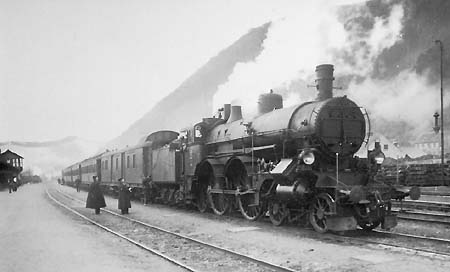
"Nizza-Express" Cannes - Warsaw (- St. Petersburg), Suedbahn class 108, Gloggnitz, Austria, before WWI (coll. Josef Otto Slezak)
|
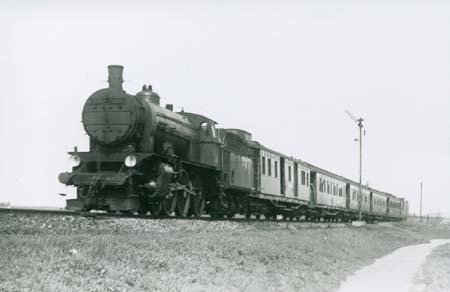
Nizza-Express with 209.29 near Hetzendorf, Austria 1927 (J. Stoegermayr, Oesterr. Eisenbahnmuseum)
|
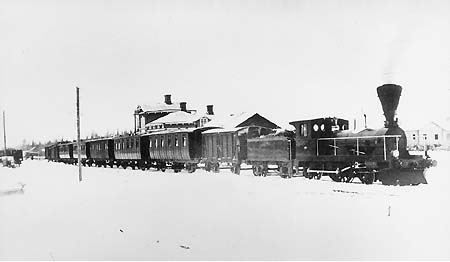
Mail train Helsinki (Helsingfors) - St. Petersburg, series A3 no.19, Jarvela, Dec. 1884 (VR Rautatiemuseo)
|
|
Finland:
Finland has Russian broad gauge. From 1876 there were 3 sleepers WLAB3 running Helsinki - St. Petersburg, by Kammerjunker Haartmann, then SM, from 1898 state-owned WLBC4. From 1912 replaced by 7 wooden WL and 8 WR of CIWL for Helsinki - St. Petersburg, after WWI sold, 1926 - 1939 state-owned WL Helsinki - Leningrad, traction by tenwheelers.
Pioneering Spirit
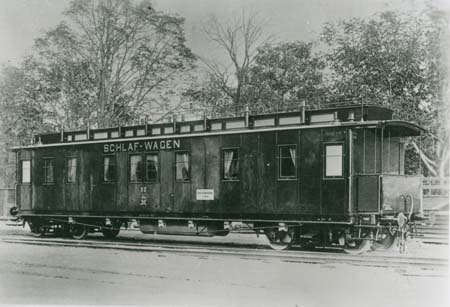
Prussian sleeper no.92 with destination board 'Berlin-Warschau/ Posen', for ordinary trains within Prussia (coll. Opladen/ Dr. Fritz Stoeckl)
|
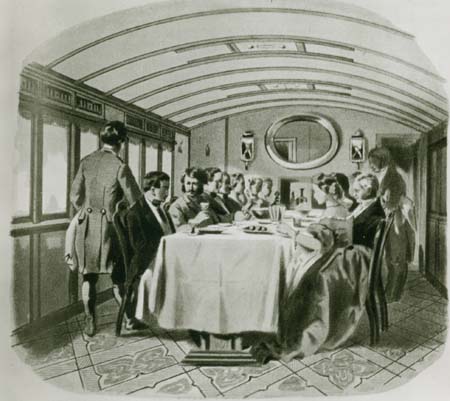
Early diner of 1864 for Kiev - Odessa (Deutsches Museum)
|
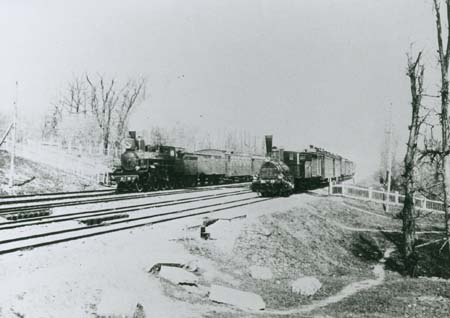
|
Kharkov-Sevastopol Express (left) with one of the A class types (DB Museum)
|
|